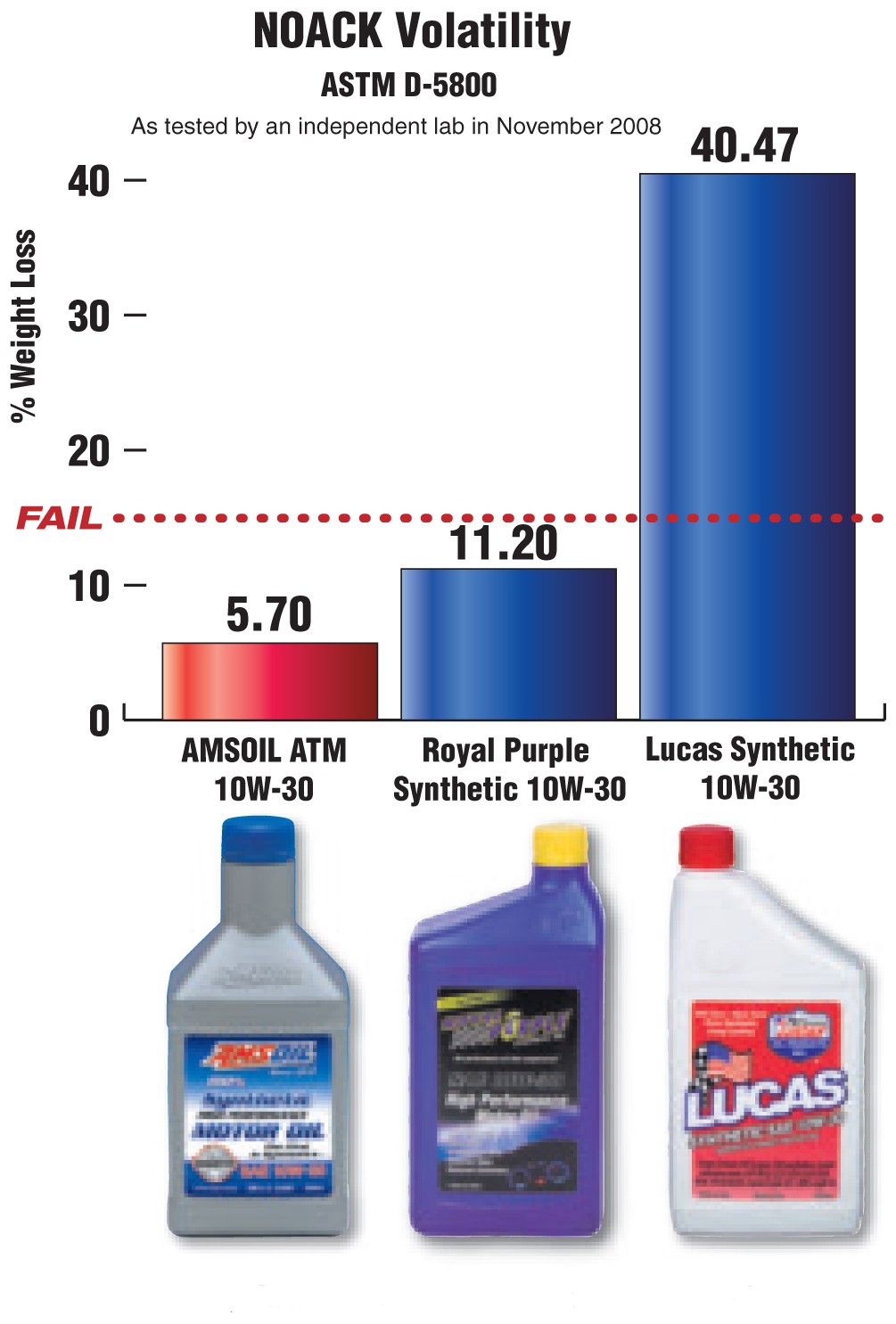|
AMSOIL was the first motor oil company in
North America to use the NOACK volatility test to measure
motor oil quality and performance. Although competing motor oil
companies initially paid no attention to NOACK results, the test has
since become a critical measurement tool throughout the industry.
Originally developed and used in
Europe, the NOACK volatility test determines how much weight
an oil loses through volatilization. The more a motor oil vaporizes, the
thicker and heavier it becomes, contributing to poor circulation,
reduced fuel economy and increased oil consumption, wear and emissions.
During the test, the subject oil is heated to 150°C for a specified
period, causing the lighter oil molecules to boil off. The results are
reported in the percentage, by weight, of the oil that evaporates. The
lower the number, the better the oil resists volatilization.
Because they are made from impure, irregular
molecules, conventional motor oils are more susceptible to the effects
of heat. The small, light molecules in conventional oil tend to
evaporate (volatilize) as the oil is heated, leaving large, heavy
molecules behind and leading to oil consumption and an increase in the
oil's viscosity. If those large, heavy molecules are chemically
unstable, they may also break down and form deposits on component
surfaces, further inhibiting the release of heat into the oil stream.
Because their formulations minimize the quantity of
impure, irregular molecules, synthetic motor oils are generally more
resistant to volatilization, allowing them to perform better than
conventional oils in the NOACK volatility test. However, due to varying
qualities of base stocks and additives, not all synthetic motor oils
perform the same in the NOACK test.
Modern engine designs generate more heat than ever,
accentuating the importance of the NOACK volatility test for
determining an oil's ability to provide an adequate level of protection
and performance. More horsepower, turbo chargers and aerodynamic styling
have created extremely hot environments that receive less cooling from
outside air, and high heat leads to oil oxidation, deposits and
thickening in conventional oils.
Because AMSOIL synthetic lubricants contain only
uniform molecules, they are much more resistant to thermal and oxidative
breakdown. AMSOIL synthetic motor oils help keep components free of
damaging varnish, deposits and sludge.
To qualify for the current API SM motor oil
specification, gasoline motor oils cannot experience a weight loss of
more than 15 percent in the NOACK test. AMSOIL synthetic motor oils were
exceeding modern requirements over 20 years ago, while many current
motor oils still have a hard time meeting this minimal requirement,
increasing wear, fuel consumption and emissions.
As seen in the graph, AMSOIL 10W-30 Synthetic Motor
Oil (ATM) easily falls below the maximum 15 percent volatilization rate
dictated by the API SM motor oil specification.

|

